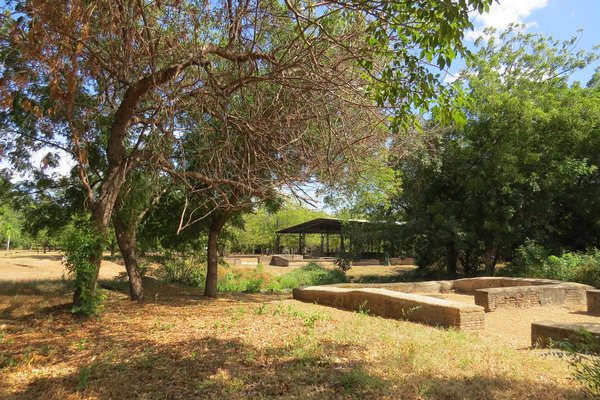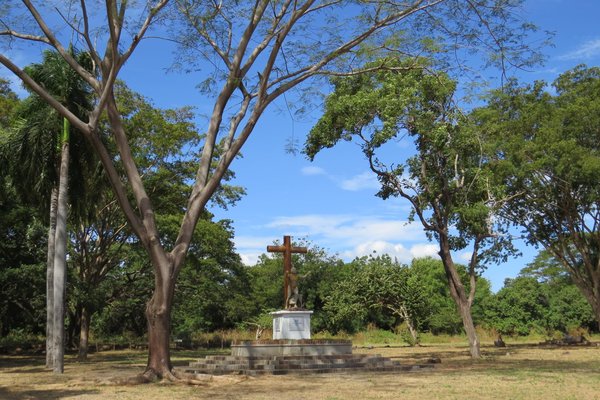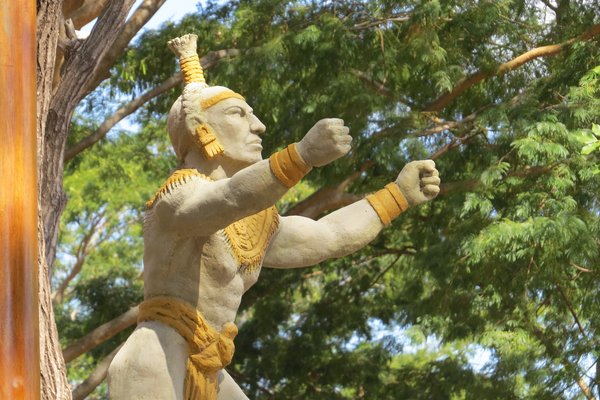Nicaragua
Ruins of León Viejo
The Ruins of León Viejo comprise an archaeological site that holds one of the oldest Spanish colonial settlements in the Americas (1524).
It has been uniquely preserved because it didn't develop further after it had been hit by a volcanic eruption in 1578 and an earthquake in 1610. The ruins have become a valuable source of information about life in the early stages of the Spanish colonial period. It had a simple cathedral, church and convent, and an exact square layout with a plaza located in its center.
Community Perspective: Well-maintained and worth a detour, as long as you keep in mind that the remains are just the rough layouts of the exterior walls/room. You can get here on public transport from the city of Leon as well, see the description by Els.
Site Info
Official Information
- Full Name
- Ruins of León Viejo (ID: 613)
- Country
- Nicaragua
- Status
-
Inscribed 2000
Site history
History of Ruins of León Viejo
- 2000: Inscribed
- Inscribed
- 1995: Deferred
- Bureau - German member queried its "Universal Value". ICOMOS said it did! But concerns over Management plan etc
- Type
- Cultural
- Criteria
- iii
- iv
Links
- UNESCO
- whc.unesco.org
- Related
-
- madeincentralamerica.net — Exploring the Ruins at León Viejo (2011)
All Links
UNESCO.org
- whc.unesco.org — whc.unesco.org/
Related Resources
- madeincentralamerica.net — Exploring the Ruins at León Viejo (2011)
Community Information
- Community Category
- Urban landscape: Colonial
Travel Information
Recent Connections
-
Foreigner prices
"admission is C$12 for Nicaraguan resid… -
Archaeological potential
"Moreover, the site has immense archaeo… -
Dog statues
The site contains a statue of a dog bit…
Connections of Ruins of León Viejo
- Trivia
-
-
Built or owned by Spanish
León Viejo was founded on June 15, 1524 by the Spanish conquistador, Francisco Hernández de Córdoba (wiki) -
Cultural sites closely connected to volcanoes
Overlooked and partially destroyed by Momotombo (1578)
-
- Damaged
-
-
Covered by volcanic ash
-
Destroyed or damaged by Earthquake
"The final blow came on 11 January 1610, when a severe earthquake destroyed what was still standing" (AB)
-
- World Heritage Process
-
-
First inscriptions
Nicaragua 2000 -
Slow Starters
1979-2000 : 21 years
-
- Religion and Belief
-
-
Cathedrals
Ruins of the cathedral -
Legends and Folk Myths
The murder of Bishop Antonio de Valdivieso in 1550 seemed to mark a turning point in its fortunes: it was widely believed to have put a curse on the town, which suffered from both natural and economic disasters in the years that followed. (AB ev)
-
- Human Activity
-
-
Mints
Royal foundry and mint
-
- Constructions
-
-
Protective Shelters
Several buildings -
Dog statues
The site contains a statue of a dog biting the leg of an indigenous man in memory of one particularly brutal early event there when the governor murdered 12 Indian hostages in 1528 using his killer dogs as the executioners.
-
- Timeline
-
-
Built in the 16th century
Heyday in mid 16th century, "frozen" in 1610
-
- Science and Technology
-
-
Archaeological potential
"Moreover, the site has immense archaeological potential"
-
- Visiting conditions
-
-
Foreigner prices
"admission is C$12 for Nicaraguan residents and US$2 for foreigners (c60C$)" BUT the US$2 includes a guided tour!!!
-
News
No news.
Recent Visitors
Visitors of Ruins of León Viejo
- Alberto Rodriguez Gutierrez
- Alejandro Lau
- alicemears
- A. Mehmet Haksever
- Ammon Watkins
- Artur Anuszewski
- Atila Ege
- Bram de Bruin
- Carlo Medina
- Carlos Sotelo
- Christoph
- ctravel
- Dorejd
- Els Slots
- Erik Jelinek
- Eva Kisgyorgy
- Frederik Dawson
- GeorgeIng61
- Iain Jackson
- Janos
- Jarek Pokrzywnicki
- João Aender
- Jon Opol
- jxrocky
- Loic Pedras
- Luis Filipe Gaspar
- Lukemarshall
- lynnz317@aol.com
- Martin
- Matthewsharris
- Michael Ayers
- Michael Novins
- Miguel Marquez
- Mikko
- Milan Jirasek
- MMM
- Nihal Ege
- Patrik
- Pink Bunny
- Piotr Wasil
- Reza
- Roger Ourset
- Roman Bruehwiler
- Solivagant
- Szabo Viktoria
- Thomas Buechler
- Vanessa Buechler
- Walter
- Zoë Sheng
Community Reviews
Show full reviews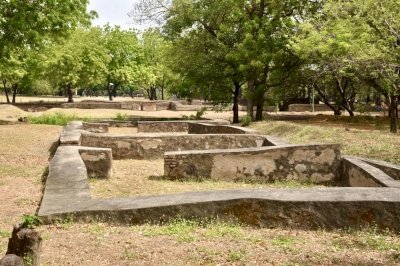
I had a full day tour from Managua to visit two Nicaraguan World Heritage Sites, the two Leon. After breakfast, a driver picked me up from the hotel to Leon Viejo with a brief stop to see the mighty volcano of Momotombo. The ruins were in the small village that my guide from Leon whom I met at the junction before the village entrance said, “a perfect place to admire Nicaraguan way of life”. He took me to see the small museum which I learnt that Leon Viejo is actually built by native Americans before the arrival of Spanish and after befriended with and enslaved the locals, the newcomer built the western styled town and lived together with natives, so Leon Viejo was quite very unique in the history of colonial city foundation.
If the story of city foundation was quite unique, the ending of the city was far stranger. According to my guide, the city lord had an argument with the priest and killed him. Later the Momotombo erupted which caused locals to believe that god hated this city because of killing priest was the great sin, so with bad omens, they decided to abandon the city and move to present day Leon. They also dismantled the city for construction material, that why noting much left to see at Leon Viejo. My guide took me the see the whole ruins, the atmosphere was peaceful as I was the only tourist. Most of the ruins I saw were just …
Keep reading 0 comments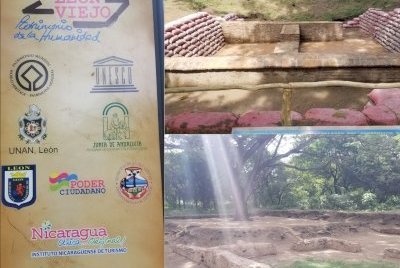
I think Nicaragua inscribed the wrong places and instead should focus on all the awesome natural sites around the country. Both Leóns are kinda lame. On the other hand without an inscription nobody would visit and no funding for keeping it maintained. There were after a 3 coaches parked outside the entrance gate when I drove up, blasting their aircon the entire time parked there and the site was "overrun" by elderly American tourists. So much in fact that no guide was available for taking me which is supposed to be mandatory (or maybe just a service you get for the $5 entrance fee). This trip is shaping up to be a DIY tour more than ever.
So while the groups heading for the restaurant across the gate (with guides hmmm) I was free to explore the remains of old Leon, abandoned after an earthquake from the magnificent Momotombo nearby (should be a WHS like Fujisan but isn't even tentative). That was many hundred years ago. A possible look of the town can be seen by a nearby model. I'm guessing it's a typical old town layout. I think I counted 3 churches alone. As you get to these places in the area you will get used to one thing: they are just walls now, barely a foot high sometimes. They aren't even original if I'm not mistaken. Replaced with new mortar to give it a look that something once stood here. The better ones even get a roof …
Keep reading 0 comments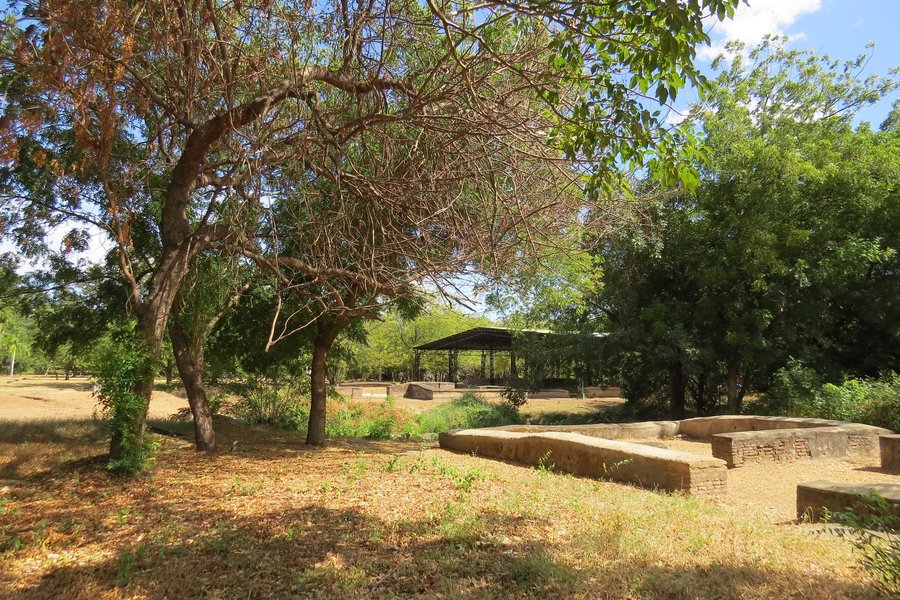
León Viejo is said to be one of the earliest cities in Spanish America. Panama Viejo, which I visited last week, makes the same claim. I have been looking for a list in which order these Spanish overseas cities were founded, but could only find this one. It doesn't even include León Viejo; if I fit it in, with 1524, it would come in a shared 11th place among the Spanish colonial cities. The difference between this and many other cities on that list is that it has not developed since the 16th century, when it was abandoned.
Anyway, León Viejo was of great importance to Nicaragua as it was its first colonial capital. The Spanish settled on the shore of what then was called the Lake of Leon. In its heyday, some 200 Spanish families lived here. A serious town was constructed for them, although there weren't many inhabitants: everything seems to have been supersized. There were no fewer than three convents, and the town hall spanned a full block. In the surrounding area lived thousands of native Americans, who were dominated and put to work by the Spanish.
The entrance fee to what is now an archaeological site comes with a guide. I was the first visitor of the day and the only person on-site during my visit. We started in the two exhibition rooms near the entrance. One is about the Spanish town, the other focuses on the indigenous culture. The point is made that early Nicaraguans …
Keep reading 0 comments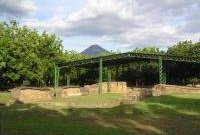
Leon Viejo consists of the remains of a colonial town founded in 1524 which had largely declined by 1580 before being finally abandoned in 1609. It then became covered by volcanic ash and was “lost” until 1967 and excavations took place. Around 18 structures have been identified, together with a plaza and main street - reflecting just how small the intial colonial settlements and populations were. The remains are set in a wooded/grassed site in sight of the town’s ultimate nemesis – the volcano of Momotombo (photo). They consist of a series of low walls rarely rising above a metre or so high which are capped by modern cement to preserve them (together in some cases with more substantial steel framed structures). The buildings include a cathedral, a convent, a fort, houses of the governor and several merchants and a number of structures of unknown purposes. There are no paintings, carvings, pillars or statues as in many classical “Old World” archaeological sites – just the rough layouts of the exterior walls/rooms and, in the religious buildings, a few graves.
At first sight there is not a lot to see! Yet we found the place well worth the 12+ km detour off the Carretera Nueva from Managua to (New) Leon to the very rural village of Momotombo on the banks of Lake Managua (It could well be an “all day” job to get to and from by public transport from Managua or Leon). The site is surprisingly well set out and …
Keep reading 0 comments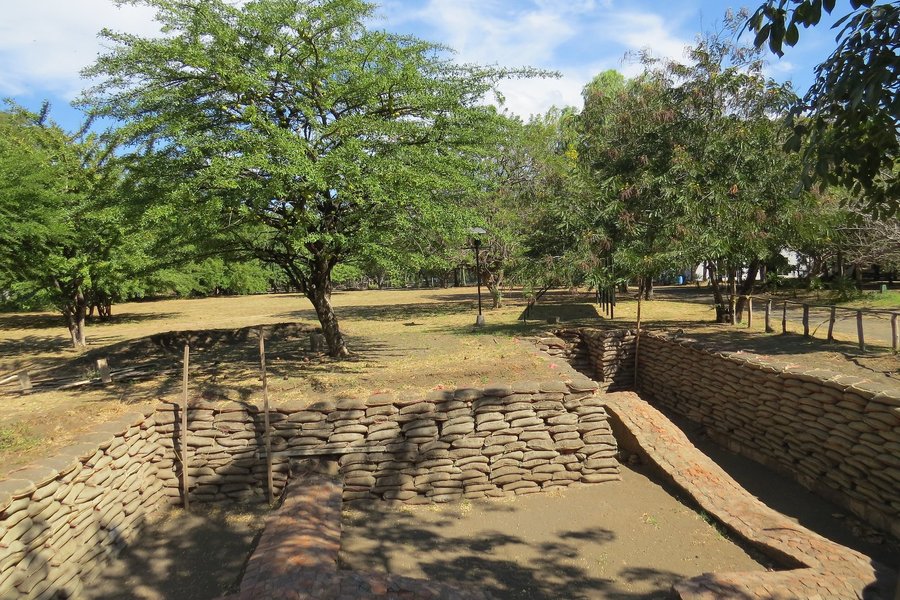
I visited the ruins in July 2003. The site can be covered with a (mandatory guide, Spanish only) in about 45 minutes. It is located on the outskirts of the small town of Mamotambo, a 20 minute bus ride from La Paz Centro, which is accessible by frequent buses from Leon or Managua Ask to be let off at Las Ruinas and from there it's a ten minute walk down a dusty road to the ruins. Few facilities in the town or at the site. There had been fewer than ten visitors in the past three days according to the guest register. It is a very hot and humid location so bring water but it is well maintained. Especially interesting are the cathedral, a massive stone structure, given the overall size of the settlement and the governor's house, the layout of which is still the norm in nearby Leon. Plaster casts of the founders, one of whom killed the under, lie together under the cathedral vault. Monuments to the Spanish rulers and Indians who rose in revolt against them attest to the brutal, bloody history of the settlement. A final must is the climb to the top of the old fort for a stunning view of the nearby volcanoes and the lake.
Keep reading 0 comments
